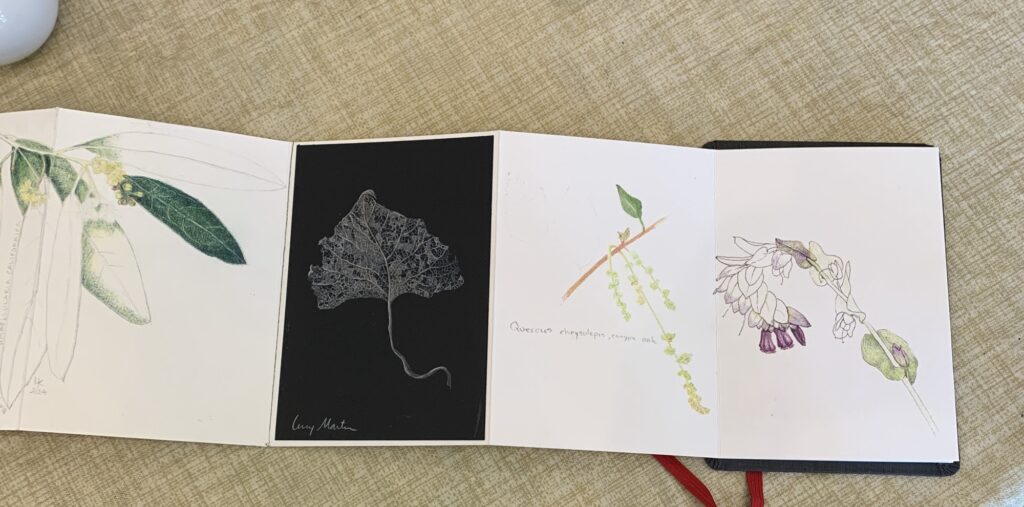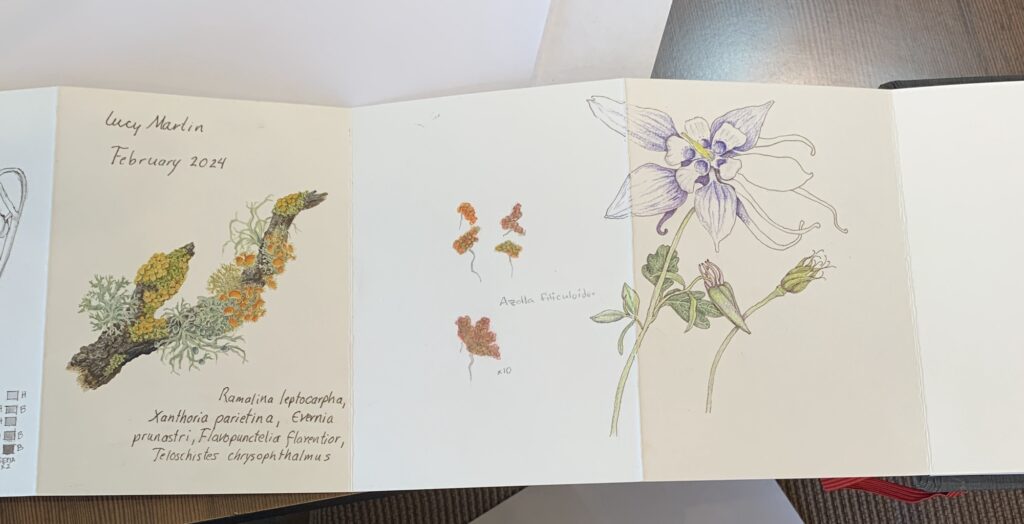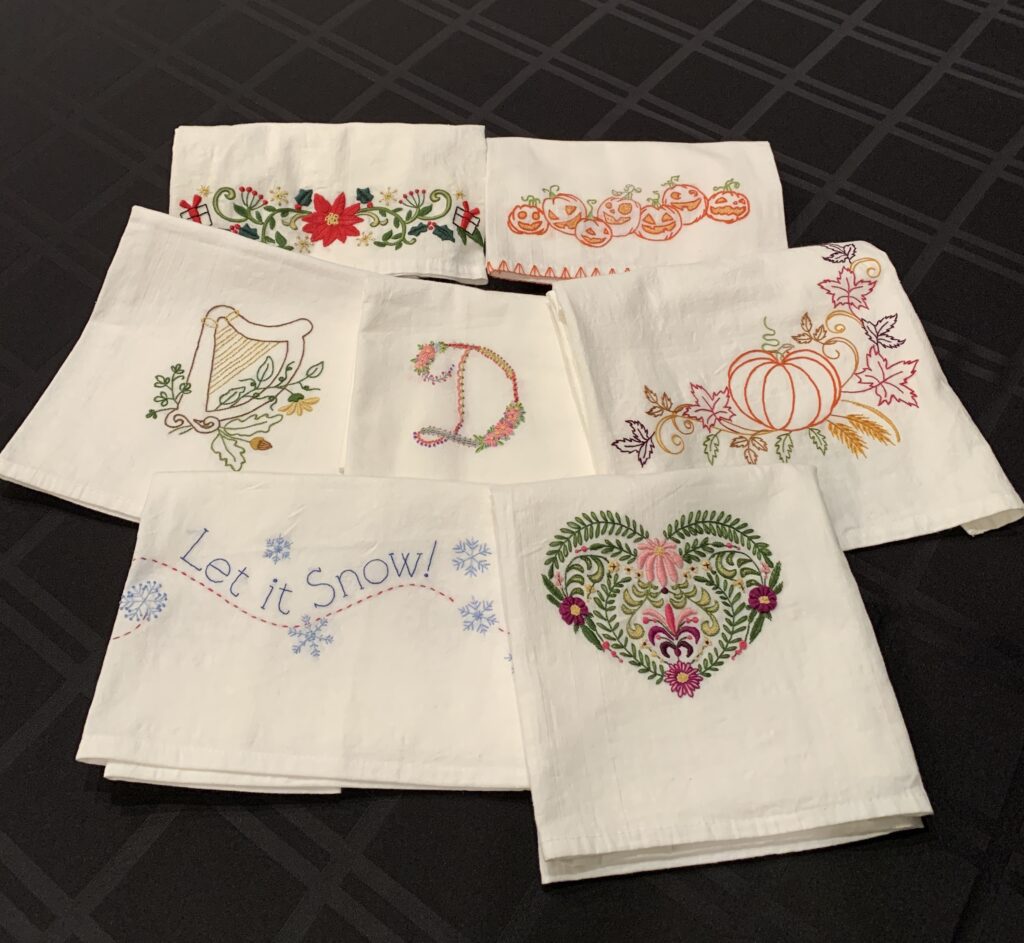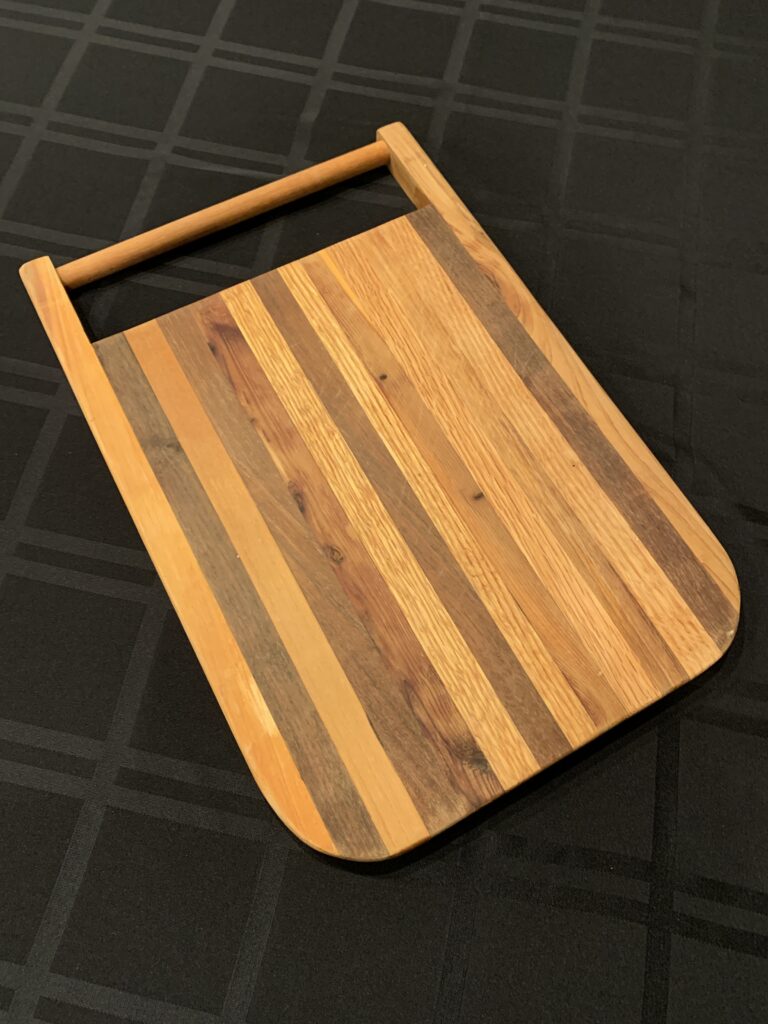This little method of converting a man’s XXL t-shirt into a shirt for me is something I developed when I started noticing that the fabrics they were using for women’s basic T-shirts were far inferior to what they were using for men’s t-shirts and there was nothing available in fabric stores that equaled what they were using for the men’s shirts either. The women’s shirts I could buy were 2-3 times the price of the men’s and would shrink like mad and wear out after just a few washings while my husband’s and son’s t-shirts would last for years. Well, I figured if I bought extra-large men’s T-shirts, there should be enough fabric there to make a shirt for a small-ish woman. Turns out I was right. Also, very early in the process I realized I could capitalize on some of the sewing already done. So, I developed this way to make a shirt that fits me and I’ll share it with you:
First, get a man’s shirt that is big enough that your bust will fit comfortably within the armscye area of the man’s shirt. This is key because the armholes are very deep in men’s shirts. Also make sure your hips will fit lower down.
Next have a simple t-shirt pattern on hand that fits you well, the way you like to wear your shirts. Note that often the fabric used in men’s shirts, while beefy and durable, might not have as much stretch and recovery as what you are used to sewing with if you make tees for yourself. If it’s really stiff, you may need to go up a size. I use Jalie 2805 for this and I do go up a size from my usual U to V. You see the shirt I’m going to use and the pattern set out and ready to go. Note that the shirt has been washed and dried in the same way that I plan to launder the final shirt:
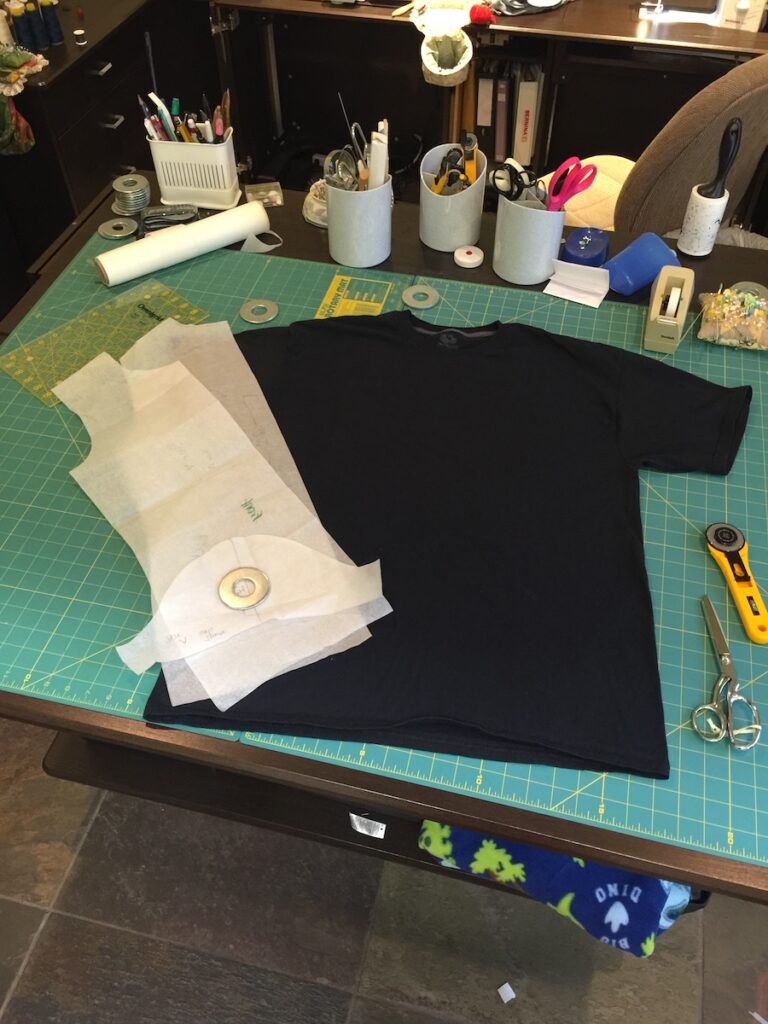
Next step is to cut the shirt apart in this very specific way. First, locate the side seam. This can be tricky because these shirts rarely have actual side seams. The body fabric is woven in a continuous tube and might be wildly off grain. Here you see me beginning to make the cut:
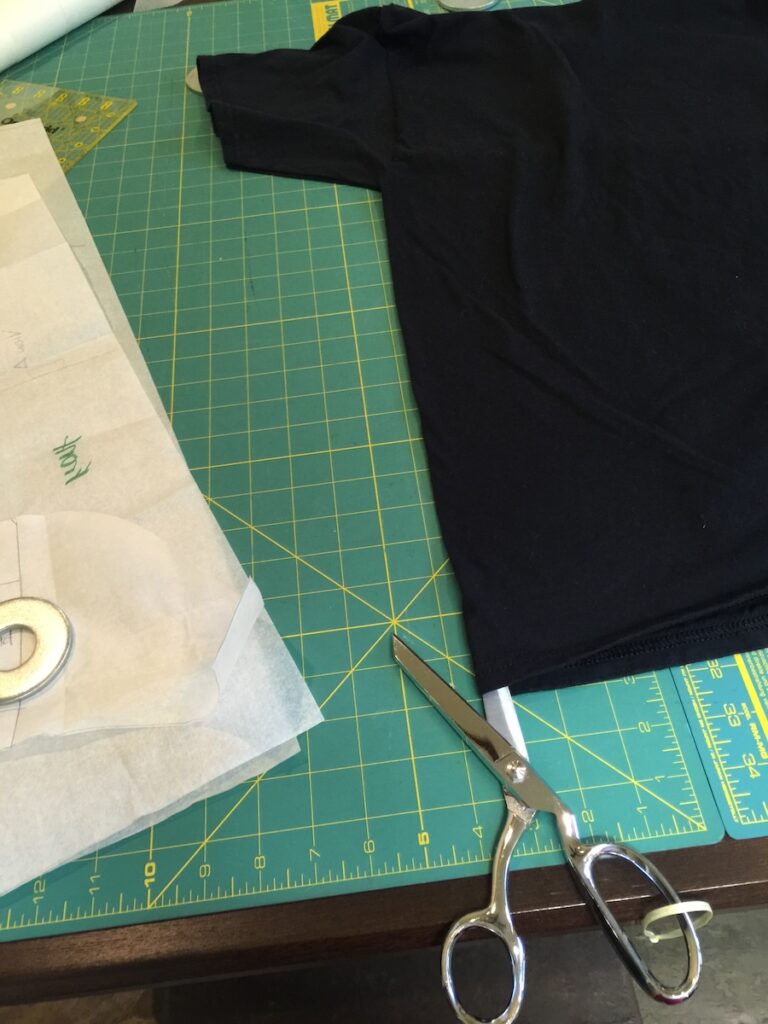
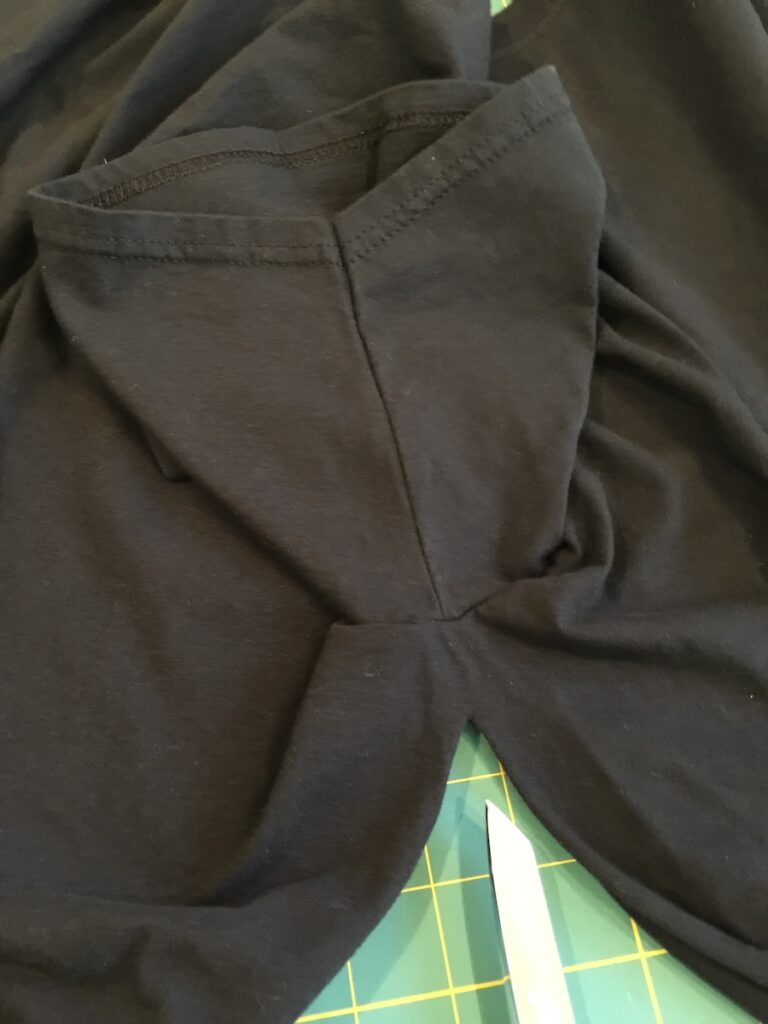
And here we are approaching the sleeve seam. Go all the way right through that seam and and then cut in the same way up the other side seam. Then, open up the shirt. Next cut off the sleeves by following the armscye seams exactly with your scissors.
Lay the sleeves out flat together, right or wrong sides together, your choice, and set your chosen sleeve pattern on top of the aligned sleeves. I like to make use of the sleeve hem and this is how I lay out the pattern piece. Note that I do not touch the sleeve hem when I cut out the sleeves, but only cut the top and sides of the sleeve pattern and that preserves the hem. You see that I am using the cap sleeve length offered on this pattern and have dropped the underarm seam a little below the hem of the shirt sleeve on both sides equally. You can experiment with the sleeve length by moving the pattern piece along its vertical axis, keeping the sides an equal distance from the hem, this is what I like:

Set those cut sleeves aside and work on the body next. Lay out the shirt with the neckband and shoulder seams intact like so:
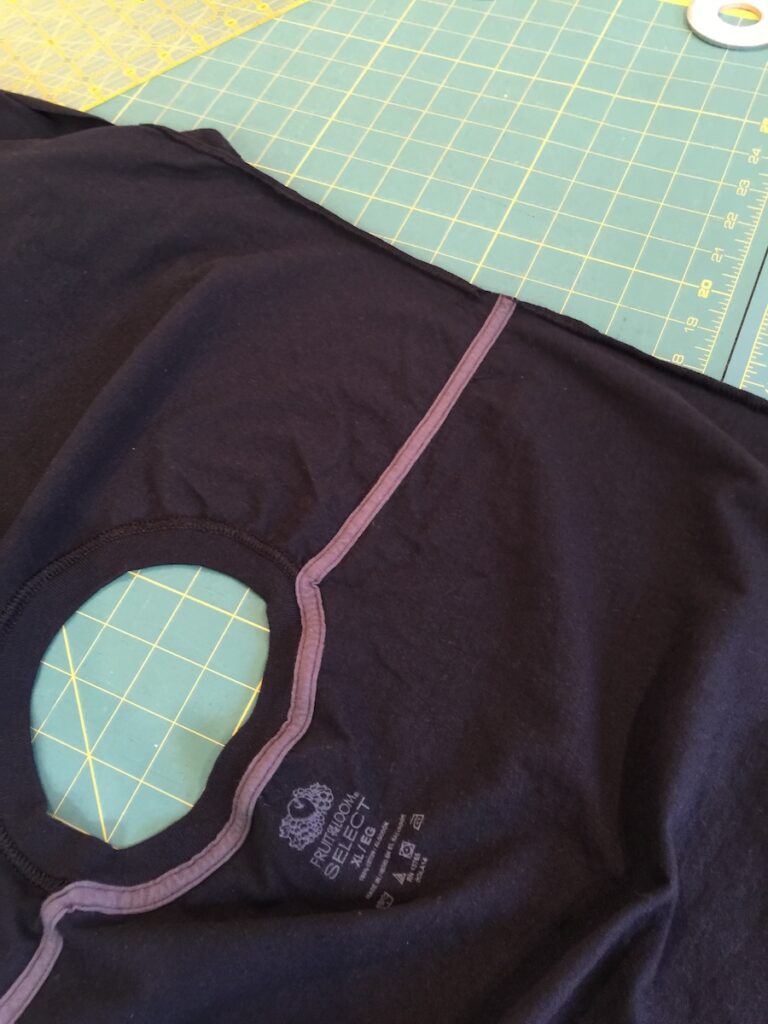
Line up and match the 2 shoulder seams, folding the shirt along the center back and center front keeping right sides out, wrong sides together:
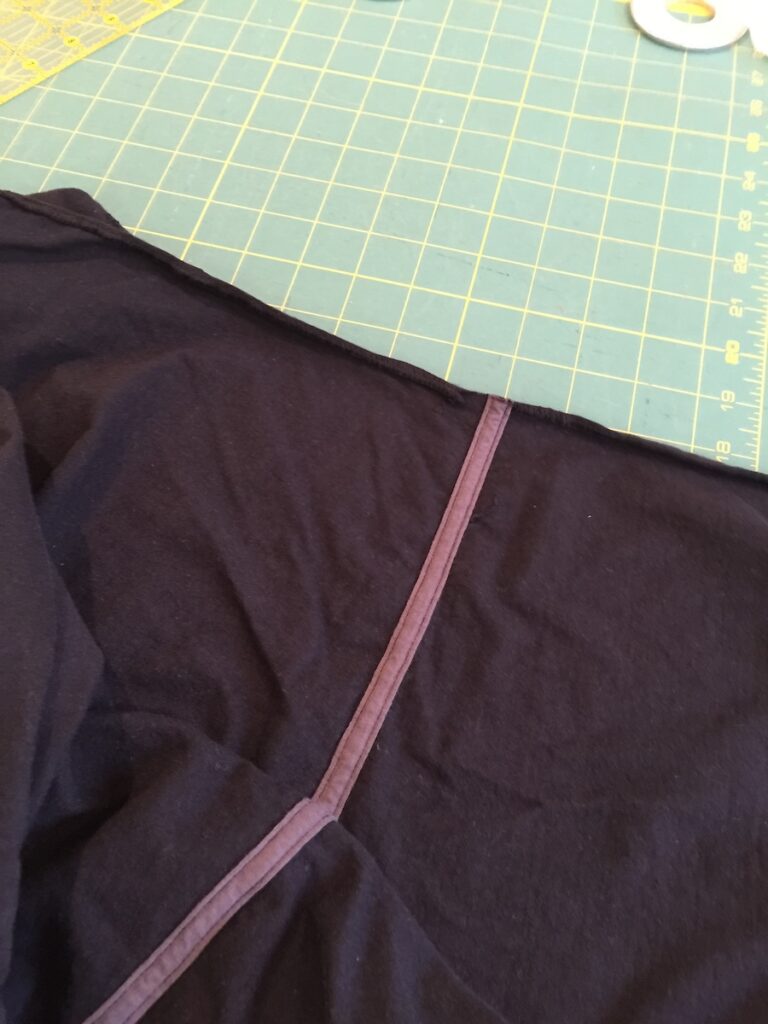
It will look like this photo below from the right side when it is lined up correctly. Wrong sides are together, match up and pin together the 2 shoulder seams: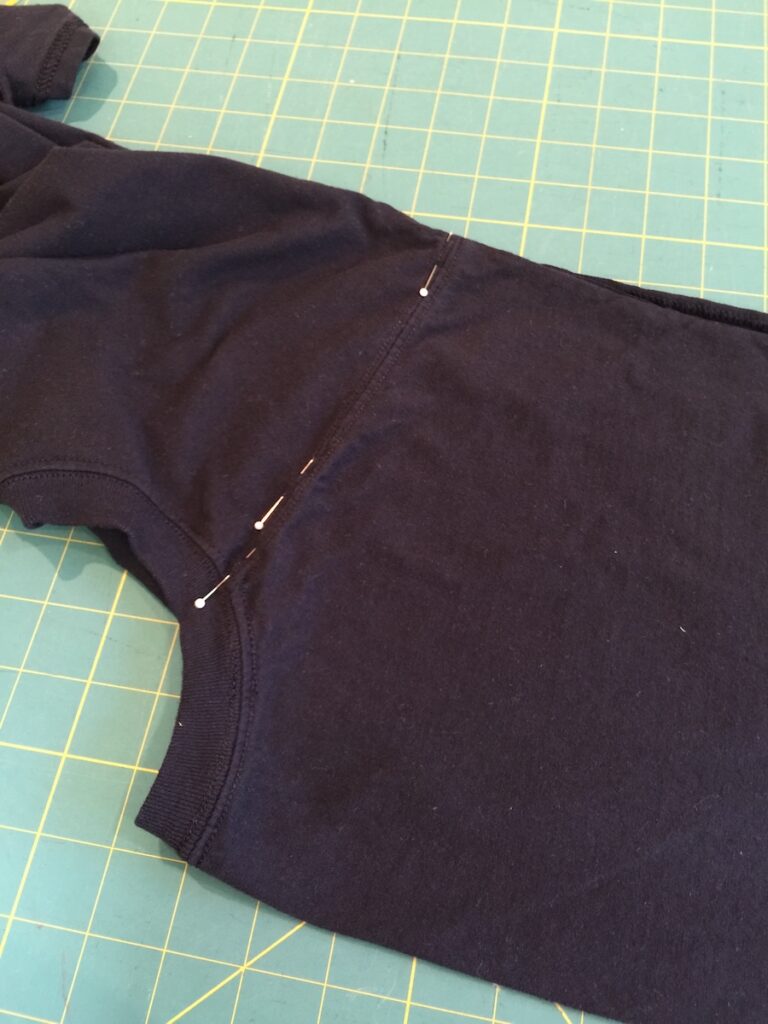
A wider view of the shirt to this point. On the left is the center back fold. On the right are the cut side seams and armscye all lined up with pins securing the shoulder seams together:
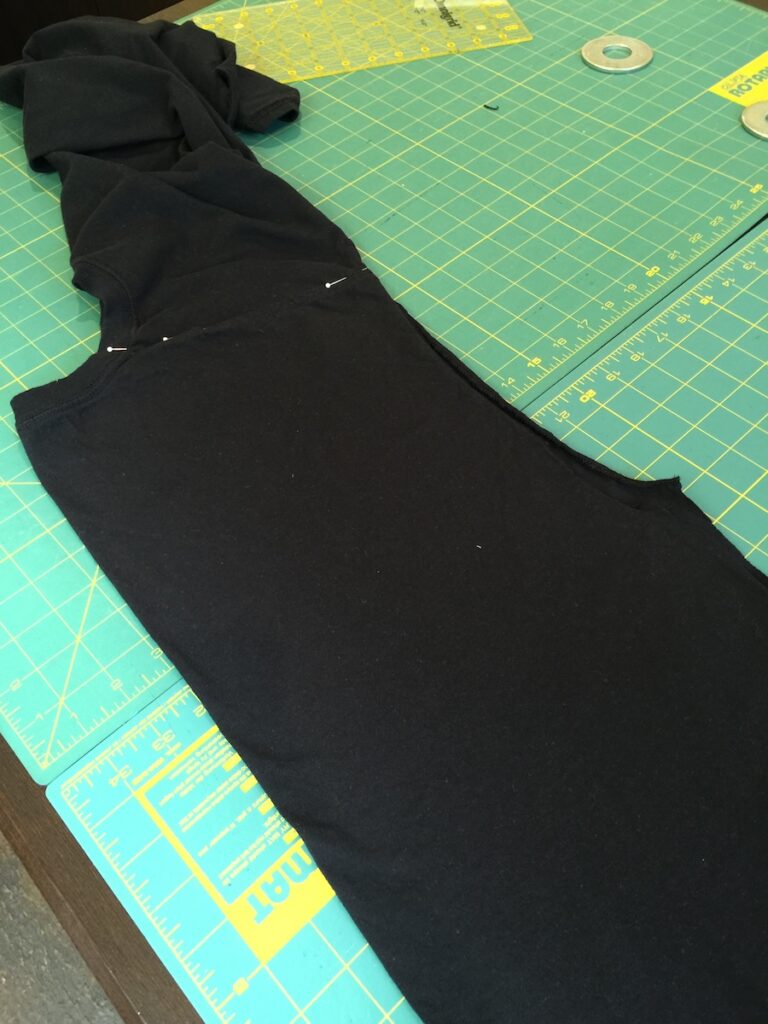
Next, you will place the center back of your back pattern piece on the center back fold line you’ve just created in the shirt as best as you are able. Please note as shown in the closeup photo below that I am matching the sewing line of the shoulder seam of the pattern to the finished shoulder seam of the original shirt, NOT the cutting line of the shoulder seam of the pattern. The yellow pin shows the location of the exact shoulder seam. Jalie patterns have 1/4 inch seam allowances: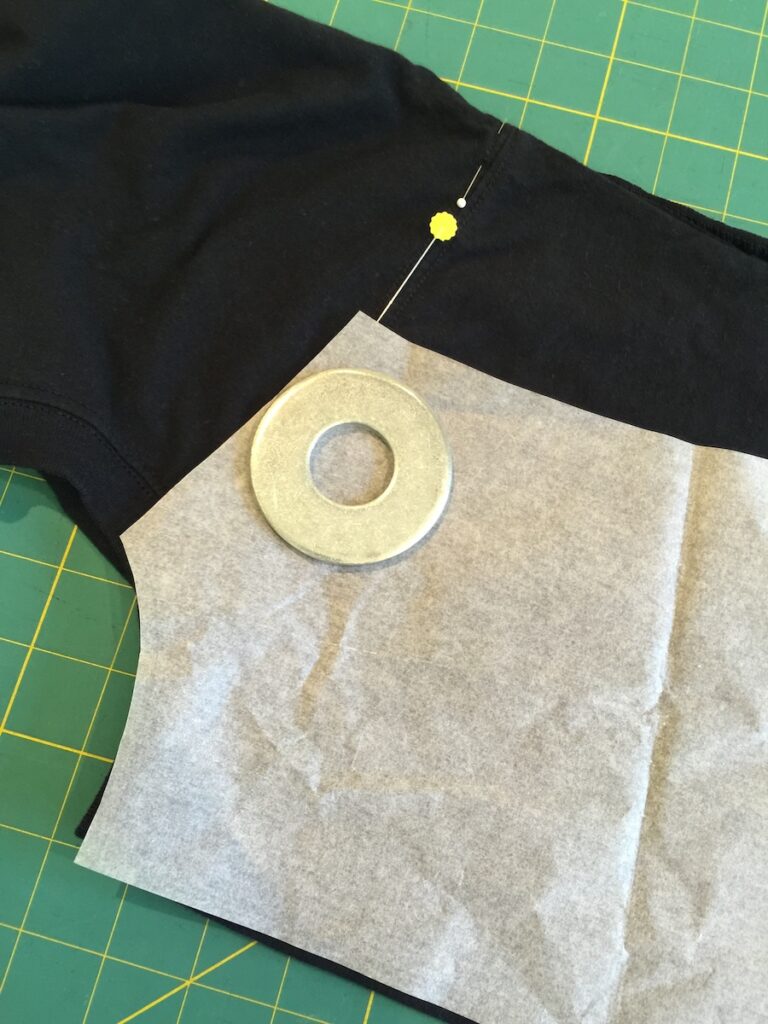
The pattern piece fits well within the shirt everywhere:
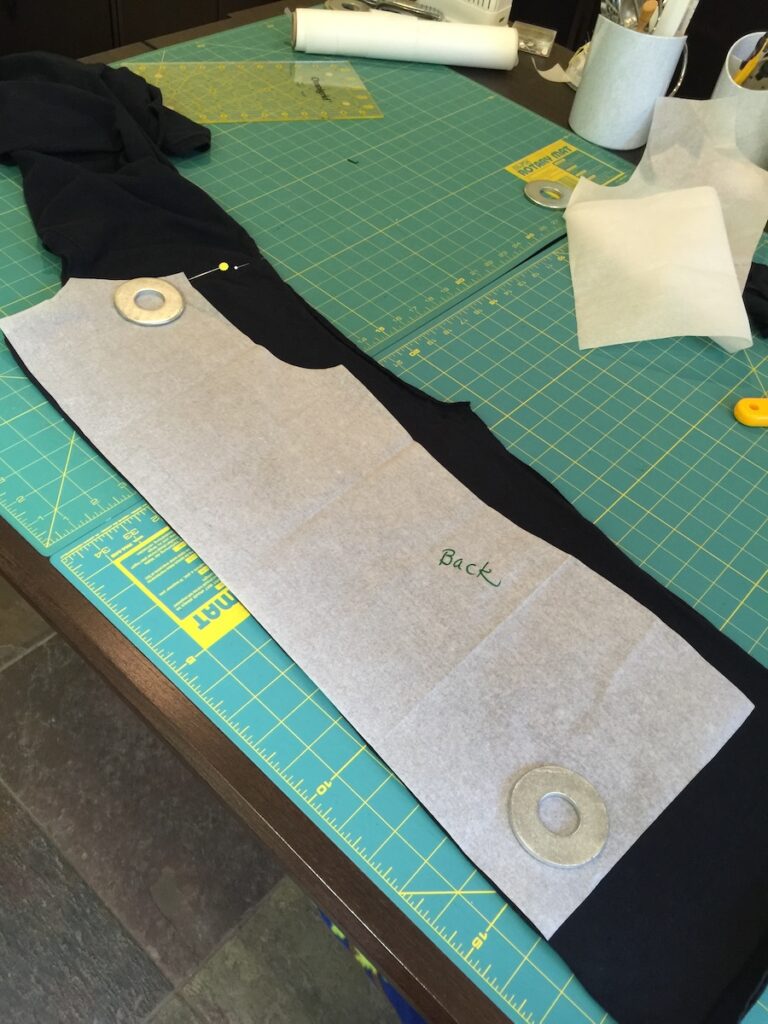
Now you will cut across the the hem and then up back side seams up to the shoulder, where you will STOP.
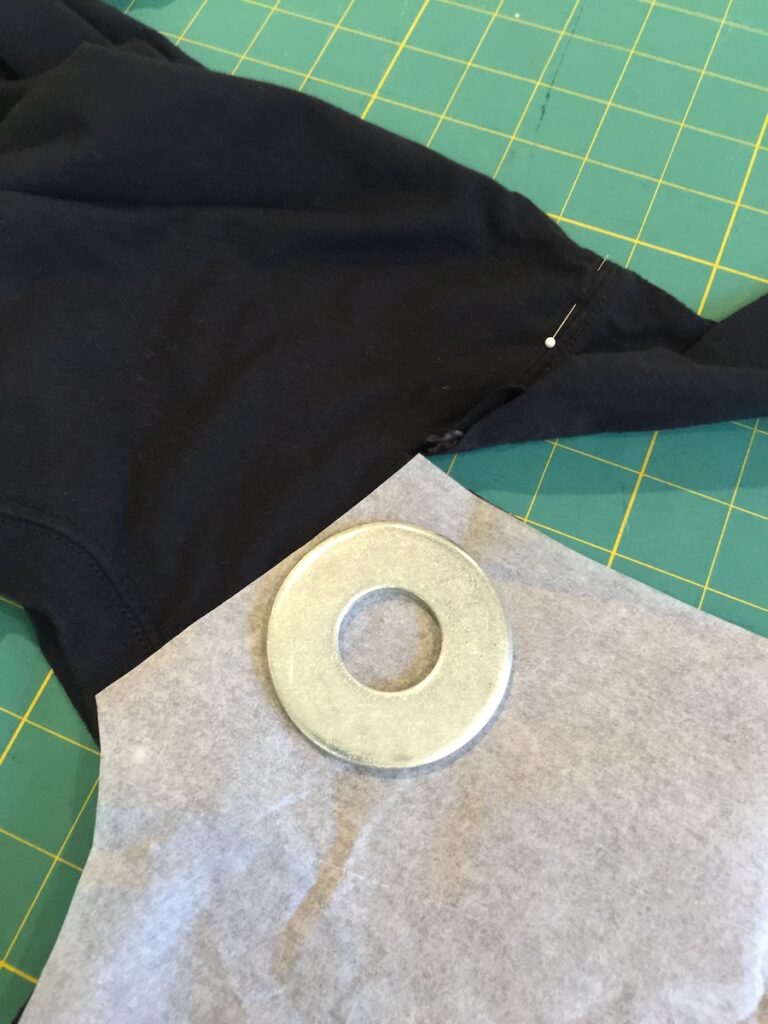
Remove the back pattern piece and do this exact same procedure with the front pattern piece. Do not remove the pins that are holding your shoulder seams together. Here is the front pattern piece placed on the shirt ready to be cut in the same way as the back. The yellow pin is still showing where the shoulder seam is:
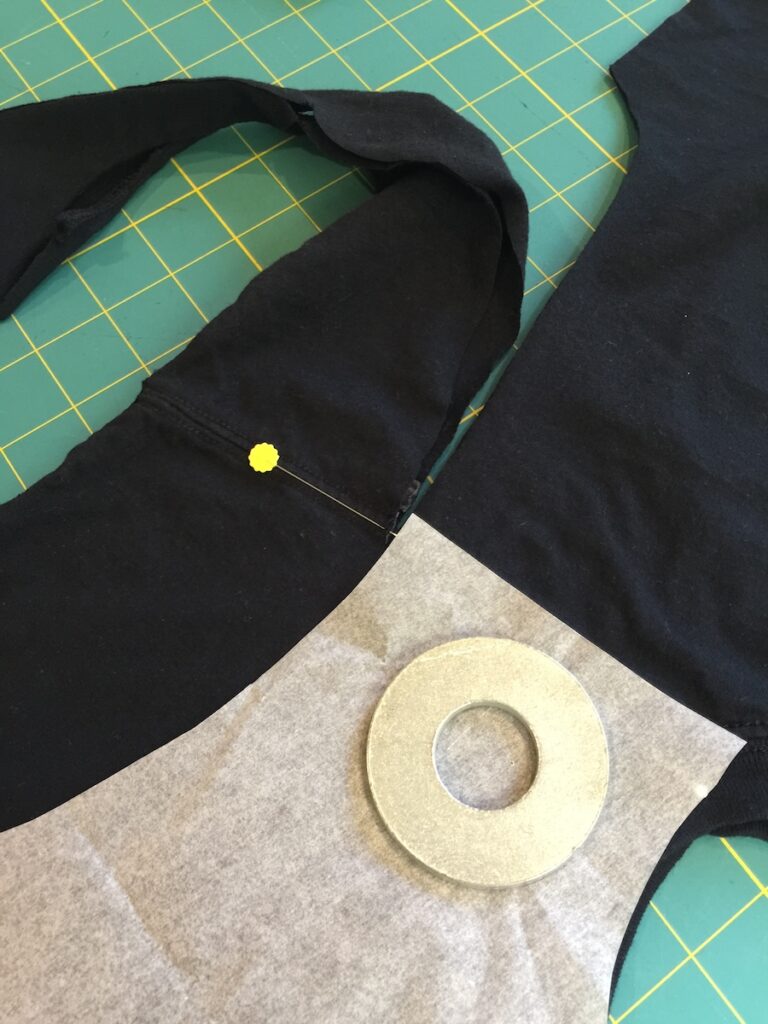
Continue to cut down the front side seams to the hem and across your hemline.
From here, all you have to do is sew the sleeves back on to the new armscye you’ve just cut as you normally would and sew sew up the two side-to-underarm seams, each in a single pass, and then hem the bottom. The sleeves are already hemmed and your neckline was also finished in the factory. Here is the final shirt:
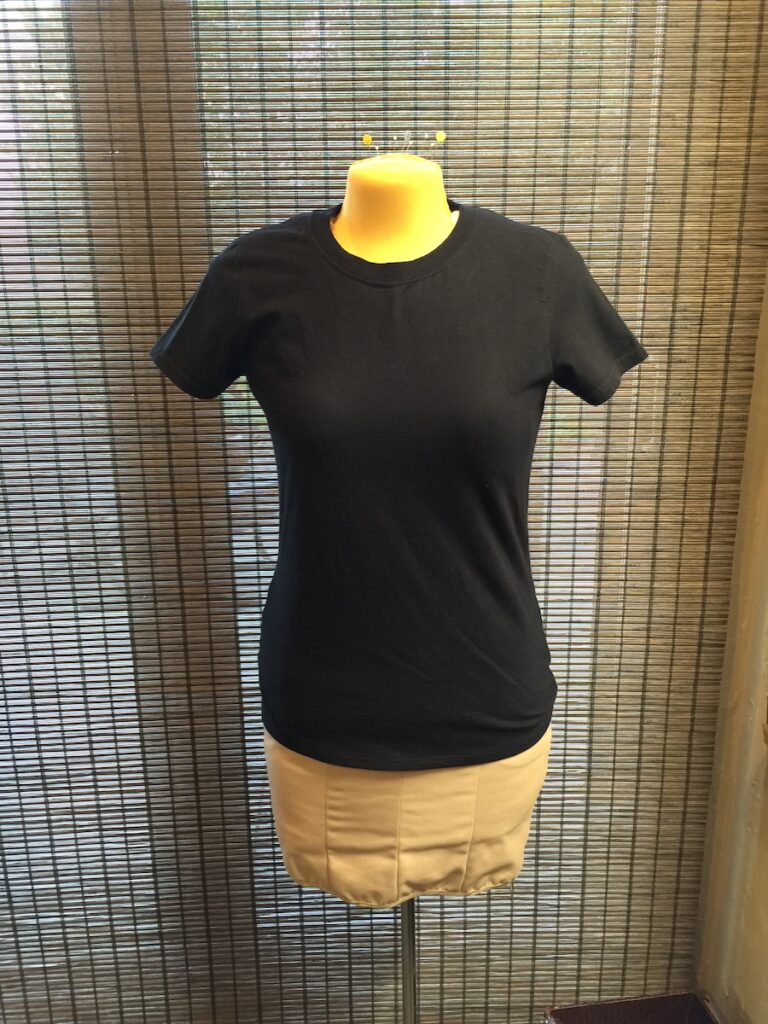
There are two further refinements of this method that I employ. The first I learned from Pamela Leggett of Pamela’s Patterns. And for the record, she has a pattern you can buy to do this type of conversion in a different way. I don’t own the pattern because I had already developed my method before I was aware of her pattern. Some people may prefer her way, which results in a slightly different look. All of her patterns I’ve purchased and sewn have worked very well for me. I especially love her pencil skirt pattern for stretch wovens, but that’s a different post! The refinement I mentioned is to steam the ribbing at the neckline and when it softens from the steam, fold it to the inside of the shirt, pin and top stitch down. This does make a more feminine-looking, slightly lower neckline with a narrower binding and is very easy to do. Thank-you Pamela!
The second refinement is to create one pattern piece to lay on top of the shirt by joining the pattern shoulder seams, being sure to overlap the pattern pieces so that you are lining up the shoulder sewing lines, not butting the 2 cutting lines. Sometimes I do it this way and sometimes the original way. Depends on my mood that day and it also can depend on the shirt and how it lays once cut apart. You do have to have a longer cutting space to lay out and cut the combined pattern piece in one go.
It definitely takes longer to explain how to do this than to just do it! I can make one of these shirts in under 2 hours easily.

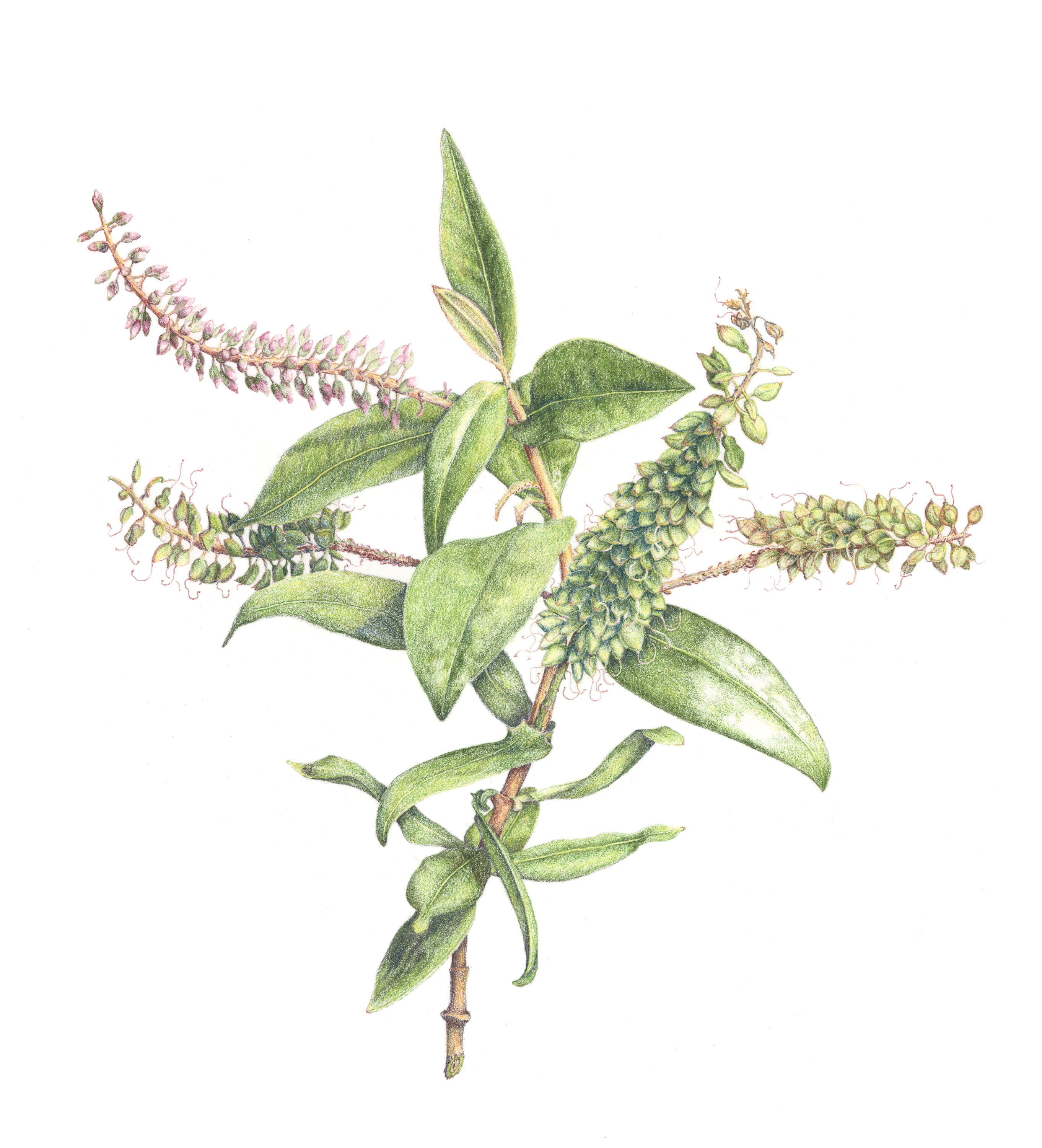
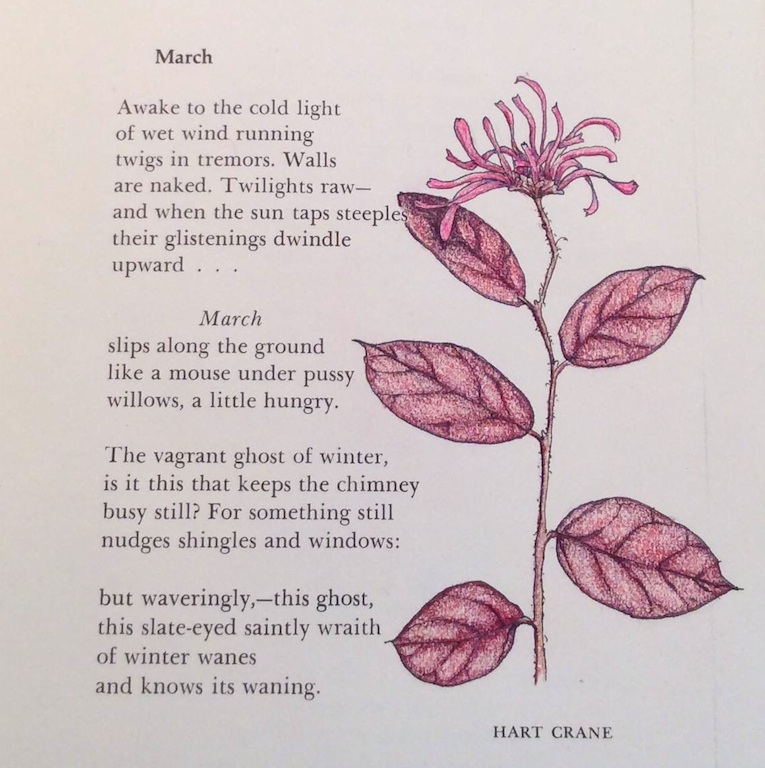
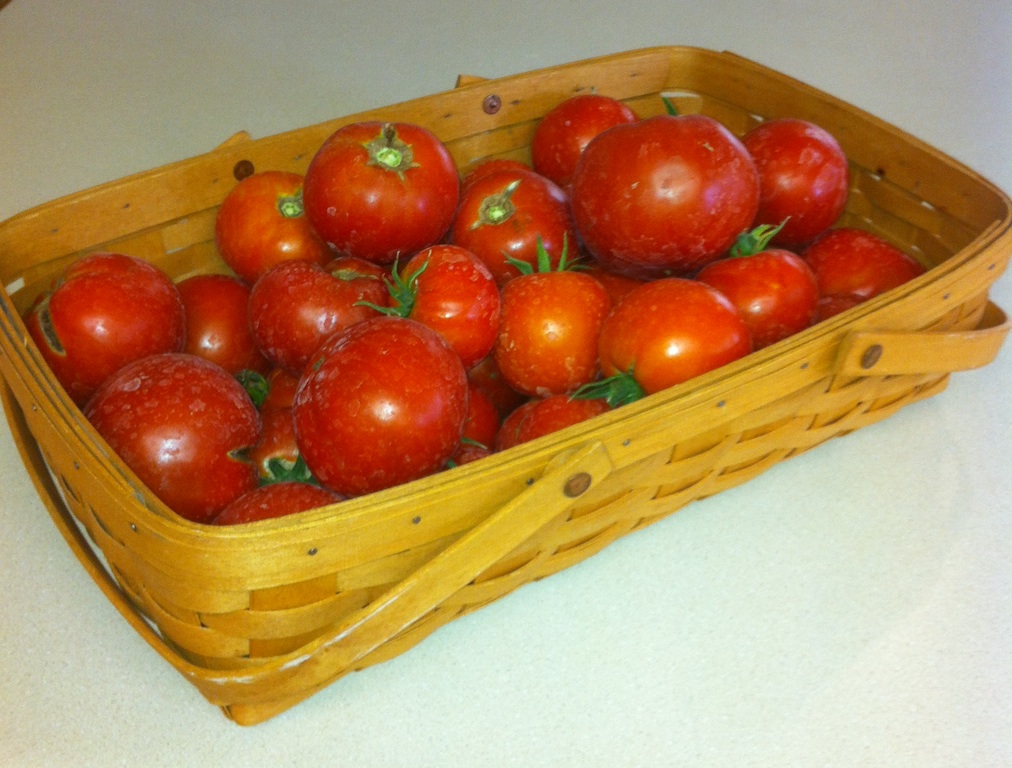
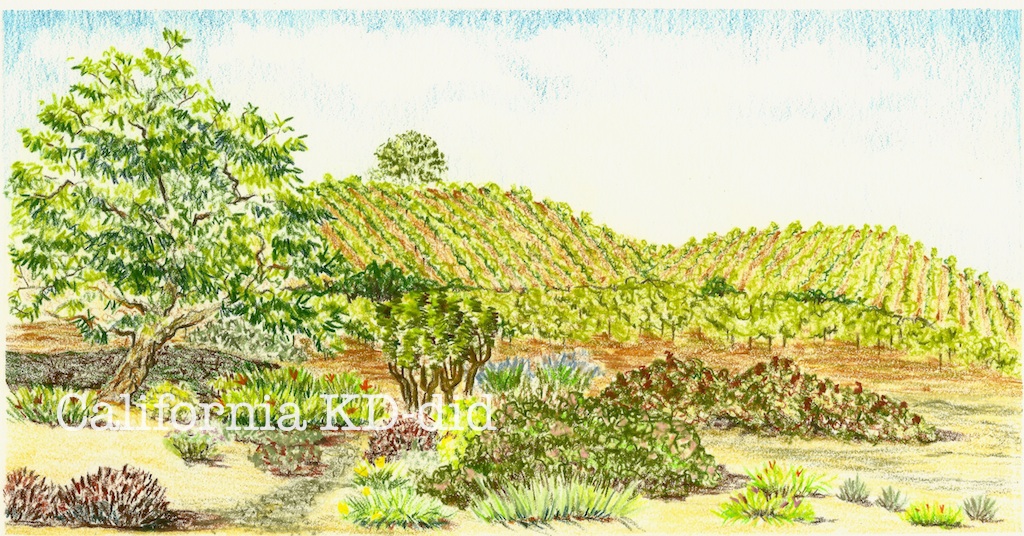
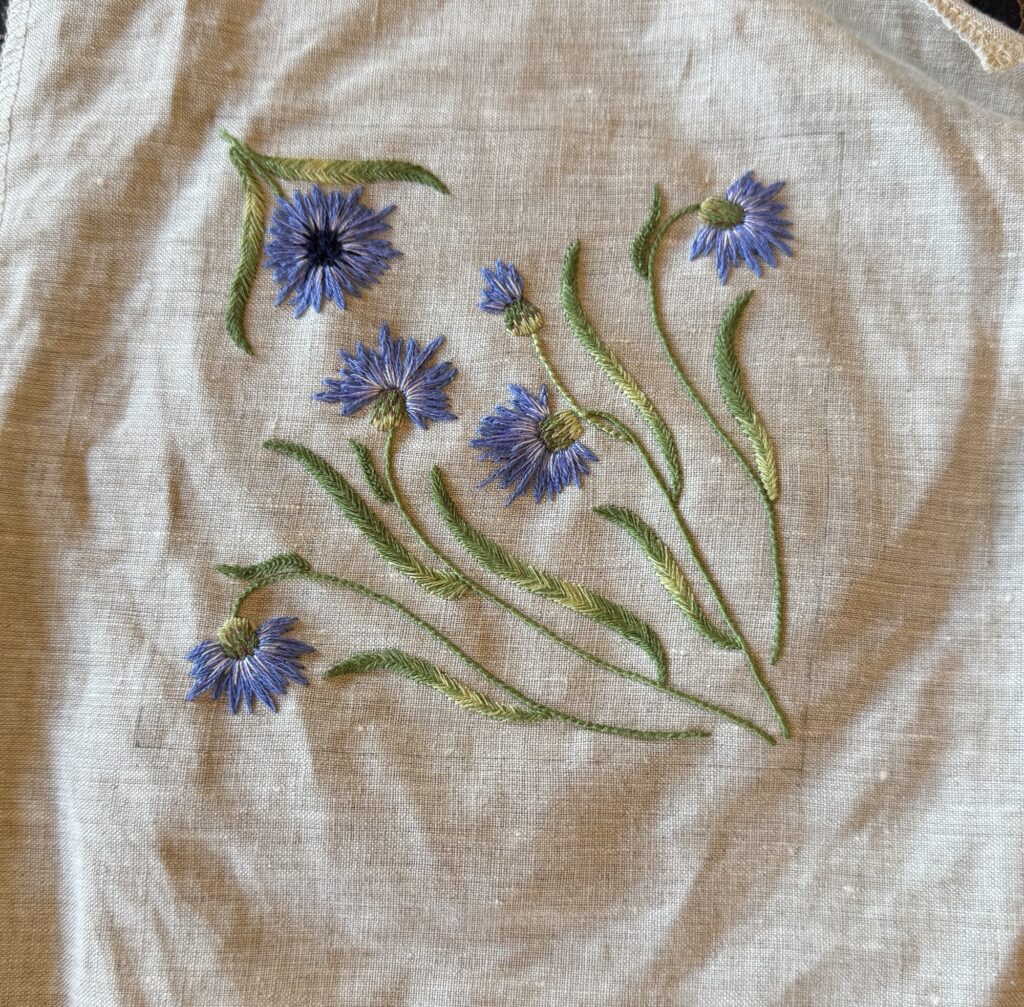
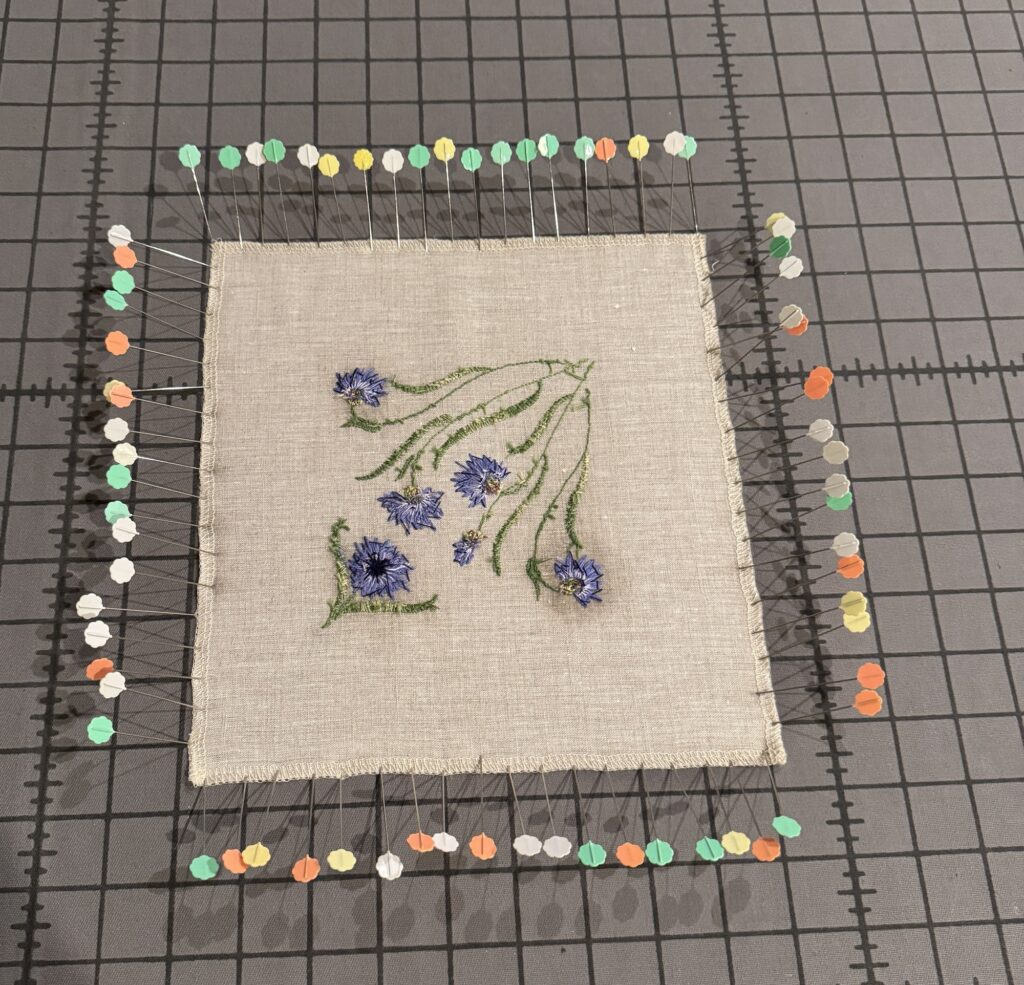

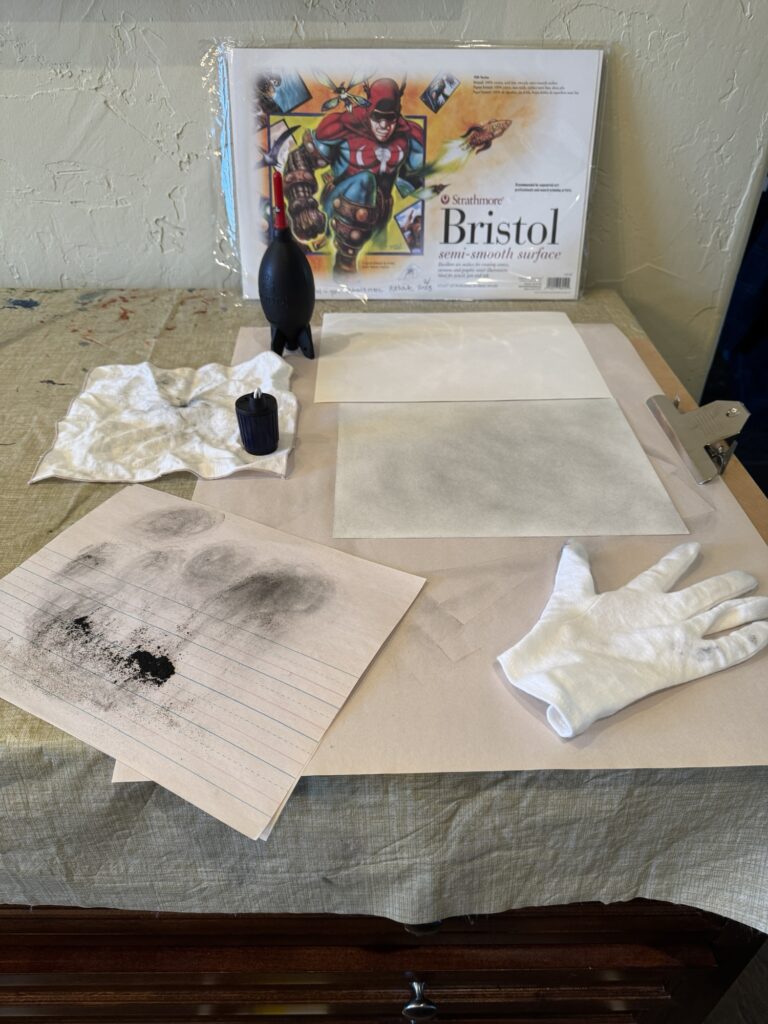
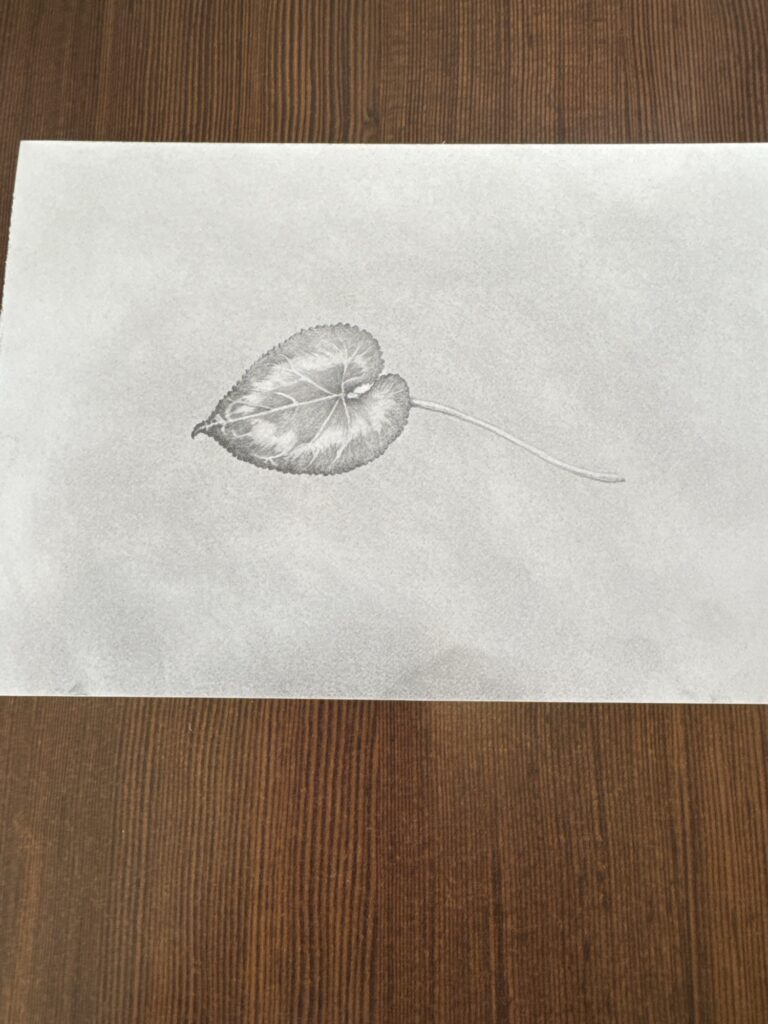


 Here they are all ready to receive spent thread ends.
Here they are all ready to receive spent thread ends. They are both quite light small and yet can hold a lot of thread snips so I think both will do the job nicely. I’m partial to the way the circular one closes like a camera aperture with a twist of the wrist, but I’m also a fan of the triangular one because it gets flatter, has an interesting shape when closed and is cuter because of the buttons. What is it about non-functioning buttons that makes things so cute? The buttons do serve a purpose here, which is to hold the flaps in place when the box stands open, but that job could be done as well or better with any bit of felt stitched in place or just a simple thread tack. The buttons definitely add panache.
They are both quite light small and yet can hold a lot of thread snips so I think both will do the job nicely. I’m partial to the way the circular one closes like a camera aperture with a twist of the wrist, but I’m also a fan of the triangular one because it gets flatter, has an interesting shape when closed and is cuter because of the buttons. What is it about non-functioning buttons that makes things so cute? The buttons do serve a purpose here, which is to hold the flaps in place when the box stands open, but that job could be done as well or better with any bit of felt stitched in place or just a simple thread tack. The buttons definitely add panache.